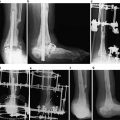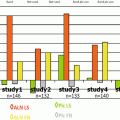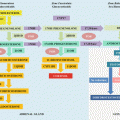Drug
Daily dose
Reduction in HbA1c
Side effects
Contraindications
Metformin (500, 850, 1,000 mg. Extended-release: 500/750 mg, 1,000 mg)
Initial small dose and titrate. Max 2,550 mg/day
1–2 %
Nausea, vomiting, flatulence, anorexia, abdominal pain, diarrhea
congestive heart failure (class 3 or 4), serum creatinine ≥1.5 mg/dl (man) ≥ 1.4 mg/dl (woman), impaired hepatic function, acute myocardial infarction, septicemia
Chlorpramida (Diabinese) 100, 250 mg
Initial: 250 mg. Max: 750 mg
1–2 %
Hypoglycemia, weight gain, photosensitivity
Type 1 diabetes; pregnancy and nursing
Glimepiride (Amaryl) 1, 2, 4 mg
Initial: 1–2 mg. Max: 8 mg
Glyburide (Diabeta) 1.25, 2.5, 5 mg
Initial: 2.5–5 mg. Max: 20 mg
Glipzide 5, 10 mg. Extended-release 2.5, 5, 10 mg
Initial: 5 mg. Max: 20 mg
Pioglitazone (Actos) 15, 30, 45 mg
Initial: 15–30 mg. Max: 45 mg
0,5–1,5 %
Weight gain, osteoporosis/fracture, bladder cancer (pioglitazone), cardiovascular event (rosiglitazone)
Heart failure NYHA class III and IV
Rosiglitazone (Avandia) 2, 4, 8 mg
Initial: 2 mg bid or 4 mg qd. Max: 8 mg
Acarbose (Precose) 25, 50, 100 mg
Initial: 25 mg tid. Max: >60 kg–100 mg tid; <60 kg–50 mg tid
0.4–1.0 %
flatulence, abdominal distention, diarrhea. If in combination with other drug and patient develop mild hypoglycemia, use dextrose, not sucrose (cane sugar) to treat.
Renal failure (Clearance Cr < 25 ml/min or creatinine > 2 mg/dl. Ketoacidosis, bowel disease, colonic ulceration
Miglitol (Glyset) 25, 50, 100 mg
Initial: 25 mg tid. Max: 100 mg tid
Nateglinide (Starlix) 60, 120 mg
Initial/Max: 120 mg tid
0.7–1.5 %
Hypoglycemia, headache, arthralgia, nausea, upper respiratory infections, constipation
Children, pregnancy, nursing, type 1 diabetes, ketoacidosis
Repaglinide (Prandin) 0.5, 1, 2 mg
Initial (depends on HbA1c): 0.5–1mg tid. Max: 16 mg/day
Bromocriptine (Cycloset) 0.8 mg
Initial: 0.8 mg 2 h after waking in the morning. Max: 4.8 mg.
0.4–0.8 %
Nausea, fatigue, constipation, dizziness, rhinitis, headache.
Renal and hepatic failure, psychosis, type 1 diabetes, syncopal attacks, migraine headache.
References
1.
UKPDS Group. Intensive blood-glucose control with sulphonylureas or insulin compared with conventional treatment and risk of complications in patients with type 2 diabetes (UKPDS 33). UK Prospective Diabetes Study (UKPDS) Group. Lancet. 1998. 352(9131):837–53
2.
ACCORD Study Group. Effects of Intensive Glucose Lowering in Type 2 Diabetes. N Engl J Med. 2008. 358(24):2545–59
3.
4.
5.
Bolinder J, Ljunggren O, Kullberg J, Johansson L, Wilding J, Langkilde AM, et al. Effects of dapagliflozin on body weight, total fat mass, and regional adipose tissue distribution in patients with type 2 diabetes mellitus with inadequate glycemic control on metformin. J Clin Endocrinol Metab. 2012 Mar;97(3):1020–31.PubMedCrossRef
6.
Nathan DM, Buse JB, Davidson MB, Ferrannini E, Holman RR, Sherwin R, et al. Medical management of hyperglycemia in type 2 diabetes: a consensus algorithm for the initiation and adjustment of therapy: a consensus statement of the American Diabetes Association and the European Association for the Study of Diabetes. Diabetes Care. 2009 Jan;32(1):193–203.PubMedCrossRef
7.
8.
Viollet B, Guigas B, Sanz Garcia N, Leclerc J, Foretz M, Andreelli F. Cellular and molecular mechanisms of metformin: an overview. Clin Sci (Lond). 2012 Mar;122(6):253–70.CrossRef
10.
Libby G, Donnelly LA, Donnan PT, Alessi DR, Morris AD, Evans JM. New users of metformin are at low risk of incident cancer: a cohort study among people with type 2 diabetes. Diabetes Care. 2009 Sep;32(9):1620–5.PubMedCrossRef
Stay updated, free articles. Join our Telegram channel

Full access? Get Clinical Tree






